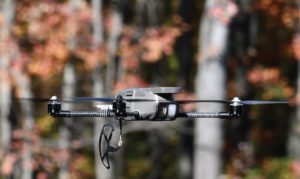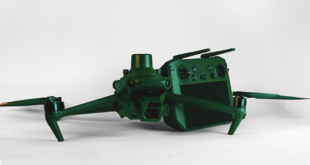Massachusetts-based company InstantEye Robotics this week snagged a new contract with the American Defense Logistics Agency’s PMA-263 drone program – an initiative of the U.S. Navy and Marine Corps.
The program will deploy 32 InstantEye’s Mk-3 GEN5-D1 SUAS systems. The partnership will support the Marine Corps’ need for field-user evaluation. InstantEye officials say the Mk-3 GEN5-D1 platform expands mission scope and provides additional reconnaissance, surveillance and target acquisition capability to the individual marine or sailor.
“We are very excited to start fielding the first system in our new InstantEye Mk-3 line of products, which is designed to further strengthen the security of our SUAS products as well as expand the capabilities and features of our systems,” said Tom Vaneck, Vice President of InstantEye Robotics. “The Marines have been great supporters of the InstantEye systems, and we think the InstantEye Mk-3 GEN5 system will greatly complement their existing portfolio and enhance force protection while reducing operational risk.”
Weighing in at just above a half pound, the Mk-3 is the company’s smallest combat-proven system.
Due to its small size, it has low audible and visual signatures, enabling it to operate undetected in proximity. The system requires only a single operator and transitions from a stowed configuration to fully operational in approximately one minute. “With an ability to operate in all weather and locations, it is an unmatched tactical enabler with operational effects.”
The Marines and Navy have been on the cutting edge of drone tech for quite a while.
The U.S. Naval Research Laboratory developed research earlier this year that allows drones to stay aloft more than 12 hours using energy from the sun and wind. Although the research is targeting military applications, the solution is likely to trickle down into commercial sectors in the future.
Last year, the Corps launched a successful demonstration of the Autonomous Aerial Cargo/Utility System, a project that converted a decommissioned UH-1H Huey helicopter into a semi-autonomous aircraft piloted remotely by an infantryman using a handheld tablet. AACUS is semi-autonomous – most Marine drone systems require a trained ground operator to transmit flight directions to unmanned aircraft. In the recent test, the converted Huey received only two transmissions – flight permission and the drop zone data.
Jason is a longstanding contributor to DroneLife with an avid interest in all things tech. He focuses on anti-drone technologies and the public safety sector; police, fire, and search and rescue.
Beginning his career as a journalist in 1996, Jason has since written and edited thousands of engaging news articles, blog posts, press releases and online content.
Email Jason
TWITTER:@JasonPReagan
Subscribe to DroneLife here.
https://dronelife.com/2018/11/24/instanteye-snags-military-drone-contract/
 Unmanned Aerial Vehicle The latest drone news
Unmanned Aerial Vehicle The latest drone news



